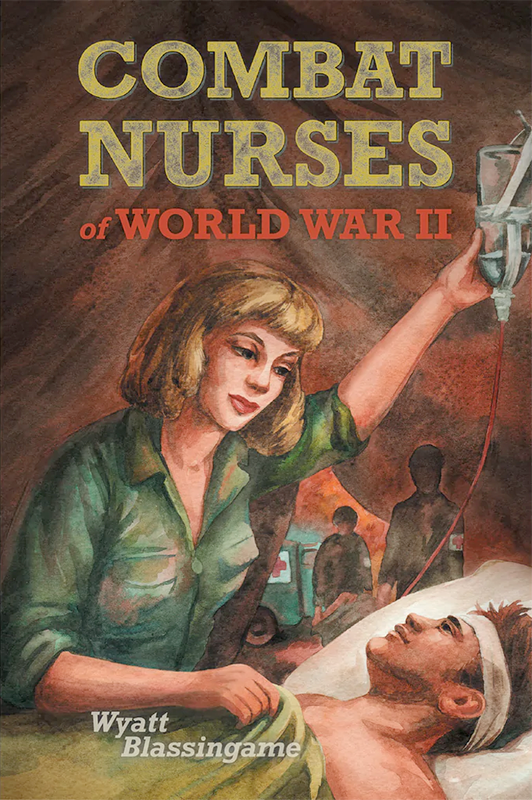A Plumfield Kids Book Review by Greta Masarik, age 13
“To all of them–these heroic women who had voluntarily endangered themselves to heal broken bodies and broken spirits as well–the entire nation would owe an eternal debt of gratitude.”
When we think of the heroes of WWII, more often than not, it’s the generals and other great men who lead the army, or the men who fought the war. The combat Nurses were also “heroes,” yet they are often forgotten. This well-written book by Wyatt Blassingame shows us that the combat nurses were just as heroic as the “heroes” of WWII.
These combat nurses saved the lives of many, through their skills as nurses, as well as giving the men the will to live. They had a way of being hopeful–even when they knew that there was little or no hope–giving the soldiers strength. Even just their presence gave the soldiers hope.
In battles, the fact that the soldiers were the last line of defense between the nurses and the enemy gave them courage.
“In bitter front-line hours, the expression was commonly heard, ‘Well, if the nurses can take it, so can we.’ The knowledge that they stood as the only line of protection between the enemy and our medical installations on the beachhead strengthened the determination of countless Allied soldiers to fight the enemy with every ounce they could muster. “
Like the soldiers, the nurses were also courageous. One example of this was in Italy when a German plane bombed one of the field hospitals and it caught fire. Due to their courageous actions, three of the nurses earned Silver Stars for bravery that night. Mary Roberts, Elaine Roe, and Virginia Rourke were the first women in U.S. history to earn Silver Stars.
In another example of their courage, a plane carrying 30 nurses and corpsmen was headed for Bari, Italy when it encountered severe fog. The flight was supposed to take two hours, but after four hours, they began to get worried. Soon they were running low on gas. At one point, they tried to make a landing in an airfield. Just in time, they noticed that all the planes were German! They got away and were able to make a landing behind the German lines in Albania. They traveled across the country for two months before they were found and rescued. In the process, they crossed the second highest mountain. Later one of the nurses, Agnes Jensen, wrote: “The natives all seemed excited to see us and our interpreter told us they were calling us ‘Albanian heros’ because we had crossed their second highest mountain after September. We could understand their excitement with no difficulty.”
Despite the war, the nurses were always trying to make life as normal as they could. On some of the Pacific islands, the nurses lived in little huts. They tried to make the huts as home-like as possible. Often they had to make their own art to hang on the walls. Sometimes they would plant flowers outside the hospitals. Often they would leave before plants would even come up, but that didn’t matter, they planted gardens anyway.
In another example of living during war, Nurse Dorthea Daley, fell in love and married a soldier named Emanuel “Boots” Engel, Later, Dorthea Daley wrote, “Everybody in the wedding party, including the bride, was in khaki.” They were married in the Philippines. Nurse Daley was ultimately rescued, but her husband died in a Japanese prison camp.
No matter how dire the situation was, the nurses found ways to make jokes about it. For example, in England there was a unit that was waiting for their assignment. They were close enough to the action to hear the German planes but far enough away that they were bombed very rarely. The Head Nurse told her nurses to always wear helmets during blackouts. When some of the nurses asked her about it, she said, “We have a lot more casualties from bumping into things in the blackout than we do from German bombs.”

Purple House Press has recently reprinted this book. They have done an incredible job! It may be paperback, but unlike some paperbacks, you have to be trying to ruin this cover! The cover has a matte finish that makes it pleasant in my hands. The artwork is well done. The paper is a cream color that is not hard on the eyes. And the font is large and easy to read. Overall, this printing is exquisite.
Combat Nurses of WWII by Wyatt Blassingame is one of the best history books I have ever read. I love this book, and I hope you will too!